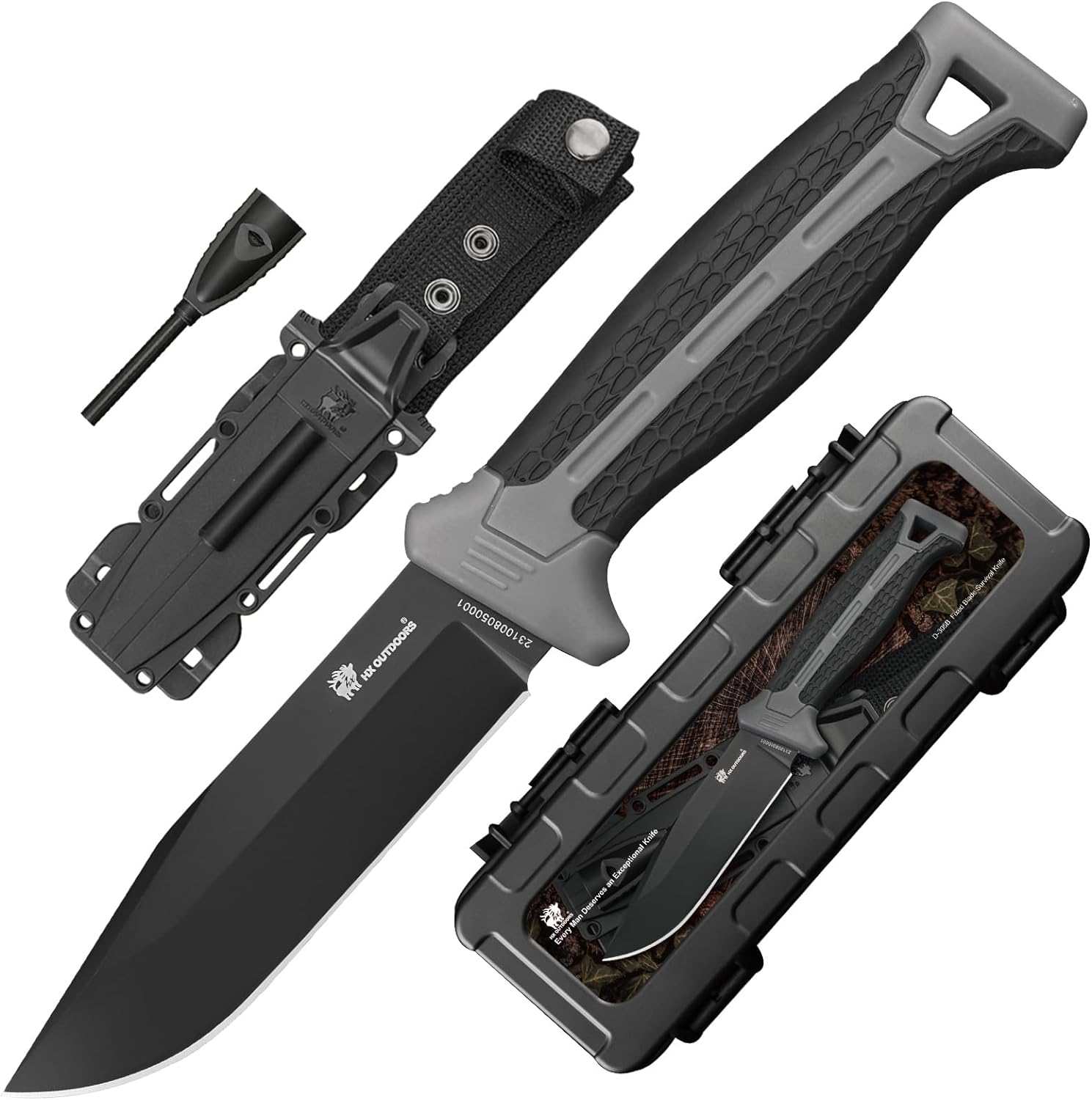Blade Material
High Carbon Steel
Considering survival knife essential features, one critical feature to consider is the blade material. High carbon steel is known for its durability, edge retention, and ease of sharpening. This type of steel is less prone to chipping or breaking, making it a reliable option for outdoor use. High-carbon steel knives are also known for their ability to hold a sharp edge, making them ideal for tasks such as cutting wood, preparing food, and other survival needs.
Stainless Steel
Stainless steel is one of several popular survival knife essential features options for survival knives due to its corrosion resistance and low maintenance requirements. While not as hard as high-carbon steel, stainless steel knives are less prone to rust and staining. Stainless steel blades are also easy to clean and maintain, a low-maintenance option.
Blade Design

Fixed Blade
One of several Survival knife essential features to consider is a fixed blade. Fixed-blade knives are known for their strength and durability, making them ideal for rugged outdoor tasks. They are also easier to clean and maintain than folding knives. Look for a survival knife with a full-tang blade, as this ensures the blade extends through the handle for added strength and stability.
Folding Blade
While fixed-blade knives are great for heavy-duty tasks, folding-blade knives offer convenience and portability. When choosing a survival knife with a folding blade, look for a sturdy locking mechanism to prevent accidental closures. Additionally, consider the blade material and choose one that is rust-resistant and easy to sharpen in the field.
Blade Length
Medium Length
Medium-length blades are a popular choice when looking for a survival knife due to their versatility. They are suitable for various tasks such as cutting, chopping, and slicing. A medium-length blade balances control and power, making it ideal for multiple outdoor activities.
Long Length
Some outdoor enthusiasts prefer long-length blades because they can handle more demanding tasks such as chopping wood or clearing brush. A long blade provides more leverage and cutting power, making it a valuable tool in survival situations where strength and durability are essential.
Handle Material

Micarta
Micarta is a durable and lightweight material commonly used for knife handles. It is made by layering fabric or paper with resin and then compressing them under high pressure. Micarta handles are resistant to moisture, chemicals, and extreme temperatures, making them ideal for survival, where durability is critical. Look for a survival knife with a Micarta handle for a reliable and long-lasting option.
G-10
G-10 is another popular material for knife handles, known for its strength and resistance to moisture and chemicals. G-10 handles are lightweight and provide a secure grip, even in wet conditions. A survival knife with a G-10 handle is an excellent choice for outdoor enthusiasts who need a rugged and reliable adventure tool.
Tang Type
Full Tang
A full-tang survival knife is one where the blade extends the handle’s full length and is one solid piece of metal. This design provides maximum strength and durability, making it ideal for heavy-duty tasks such as chopping wood or prying open objects. Full tang knives are less likely to break or come loose from the handle during use, ensuring reliability in critical survival situations. The complete tang construction also allows for better balance and control, making using the knife for precision cutting or carving tasks easier.
Partial Tang
Partial tang knives have a blade that does not extend the entire handle length, with only a portion of the metal running through the handle. While partial tang knives are typically lighter and more compact, they are not as strong or durable as full tang knives. This makes them less suitable for heavy-duty tasks and may not hold up well under extreme conditions. However, partial tang knives are often more affordable and may be sufficient for lighter tasks such as food preparation or small cutting jobs. When choosing a partial tang survival knife, it is crucial to weigh the trade-offs between strength and convenience.
Additional Features

Serrated Edge
A survival knife with a serrated edge can be highly beneficial in various situations. The serrated edge allows easier cutting through rigid materials such as rope, fabric, or bone. This feature can be helpful when you need to quickly cut through something without exerting too much force. Additionally, the serrated edge can be used for sawing through wood when building a shelter or gathering firewood. It is essential to look for a knife with a serrated edge that is durable and sharp to ensure its effectiveness in survival situations.
Firestarter on Handle
Another essential feature to look for in a survival knife is a firestarter built into the handle. This can be a lifesaver in emergencies where you must quickly start a fire for warmth, cooking, or signaling for help. Having a firestarter on the handle of your knife eliminates the need to carry additional fire-starting tools, making your pack lighter and more streamlined. Look for a knife with a reliable firestarter that is easy to use and can produce sparks even in wet or windy conditions. This feature on your survival knife can significantly increase your chances of survival in the wilderness.

Leave a Reply
You must be logged in to post a comment.